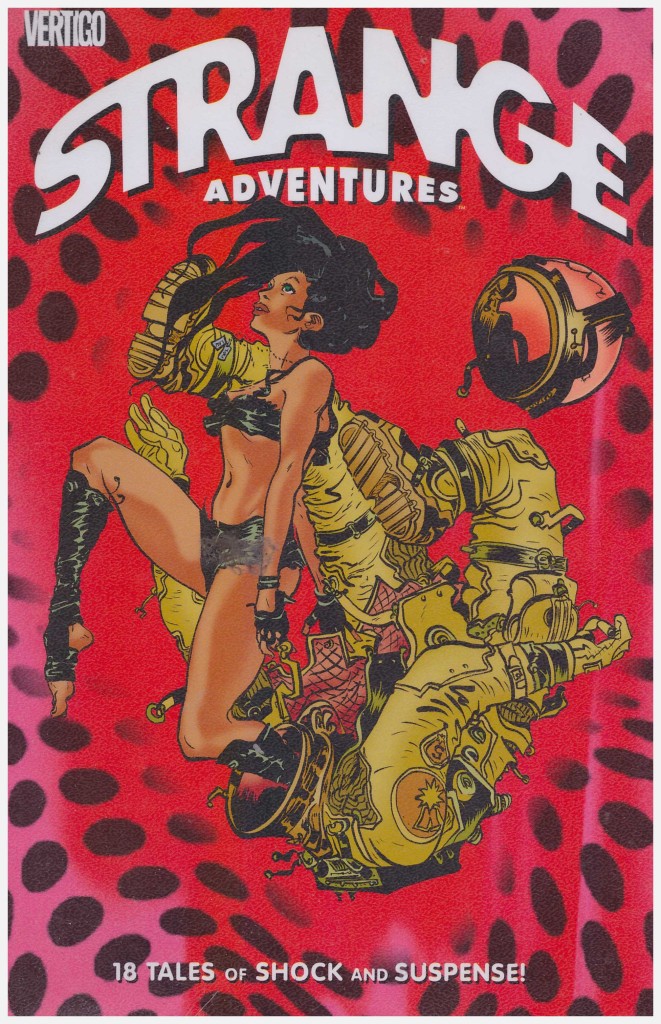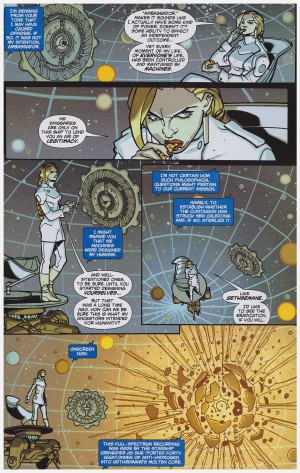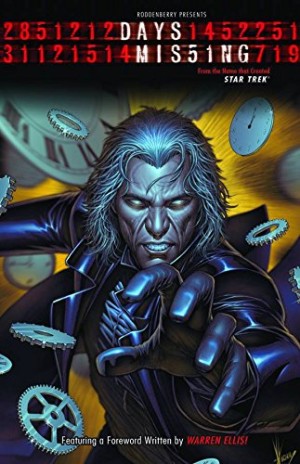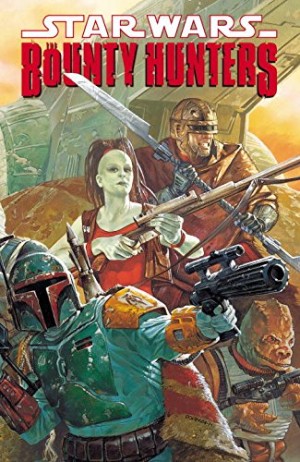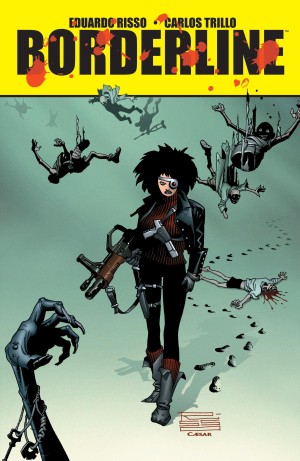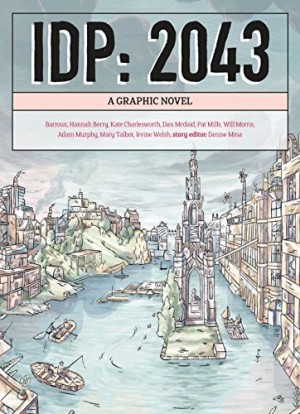Review by Karl Verhoven
DC’s Strange Adventures title has pedigree dating back to the 1950s, and the brief is simple, to deliver an engrossing SF story in eight pages. Sting in the tail preferable.
Every few years there’s an attempt to revive the science fiction anthology, pioneered by EC in the 1950s, and successful for a whole posse of bandwagon jumpers. Perhaps the tenor of the times prompted favour, as no matter the quality, the commercial success has never been replicated since. The difference between that material and any latter day imitators is optimism. In those 1950s publications the future seemed glorious, with unfulfilled potential at every pit stop. Optimism is a precious commodity in this collection of betrayal, cynicism and lack of hope, where control, dystopia and desolation are the primary themes. Stories begin with lines like “Sometimes I want to kill Aaron”, “Your apartment is obviously not clean or safe enough for your son to come home”, or “Our great rationalisation allowing each Kihdallan citizen to forfeit fertility and utilise higher thought…” Even Michael Allred, usually the most upbeat of storytellers, while not entirely succumbing to the prevailing mood, hardly provides a barrel of laughs.
This is a Vertigo publication, so it’s not as if the glum and despondent are entirely unexpected, but far from hijacking the imagination as a blurb boasts, it’s accompanied by a general lack of inspiration. Most content can be relied upon to present humanity poorly, and very few of the eighteen stories are memorable. Peter Milligan’s is an exception, as is Ann Nocenti’s toying with the quantum possibility, while Paul Cornell provides an interesting taster for his Saucer Country series. Jeff Lemire’s speciality of isolation transfers well to science fiction with a rationalisation of a ridiculous 1960s character.
Artistically, we’re on higher ground with a far greater variance of tone from Goran Sudžuka’s uncluttered simplicity to the superbly crafted detail supplied by Michael Wm. Kaluta, the stark contrasts of Eduardo Risso (prefacing Spaceman) and the decorative style of David Gianfelice (sample page). Ming Doyle is a better artist than writer, and Sylvan Savoia on Milligan’s piece strikes the right emotional tone. Sebastian Fiumara, Fred Harper and Inaki Miranda also impress.
Is the material within Strange Adventures just a representation of the zeitgeist? It could equally be a representation of editorial taste or creators conforming to what they consider the imprint produces. Whatever the truth, it’s resulted in stories that rarely stretch the mind and all too often accentuate the worst qualities of humanity.
